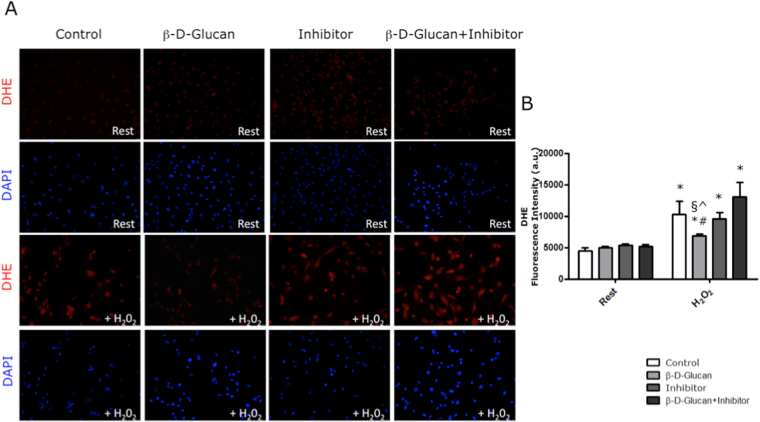Figure 9.
BBG prevents the rise of anion superoxide levels in a p53-dependent manner. (A) Representative images of DHE (dihydroethidium) staining of HUVECs at rest and after acute oxidative stress (+H2O2). (B) At rest, the 7-day treatment with 3% BBG (β-D-Glucan), PTF-α (Inhibitor) and β-D-Glucan + Inhibitor did not increase the anion superoxide levels in untreated HUVECs (Control). At stress (+H2O2), β-D-Glucan prevented an increase in anion superoxide generation compared to untreated cells (Control). Conversely, the 7-day co-treatment with β-D-Glucan + Inhibitor precluded the anti-oxidant effects of BBG in cells exposed to acute oxidative stress. The results are shown as arbitrary units of fluorescence intensity (see Methods). PFT-α: pifithrin-alpha; H2O2: hydrogen peroxide. All measurements are mean ± SD. *p < 0.05 vs. corresponding resting condition; #p < 0.05 vs. Control + H2O2; §p < 0.05 vs. Inhibitor + H2O2; ^p < 0.05 vs. β-D-Glucan + Inhibitor + H2O2.

